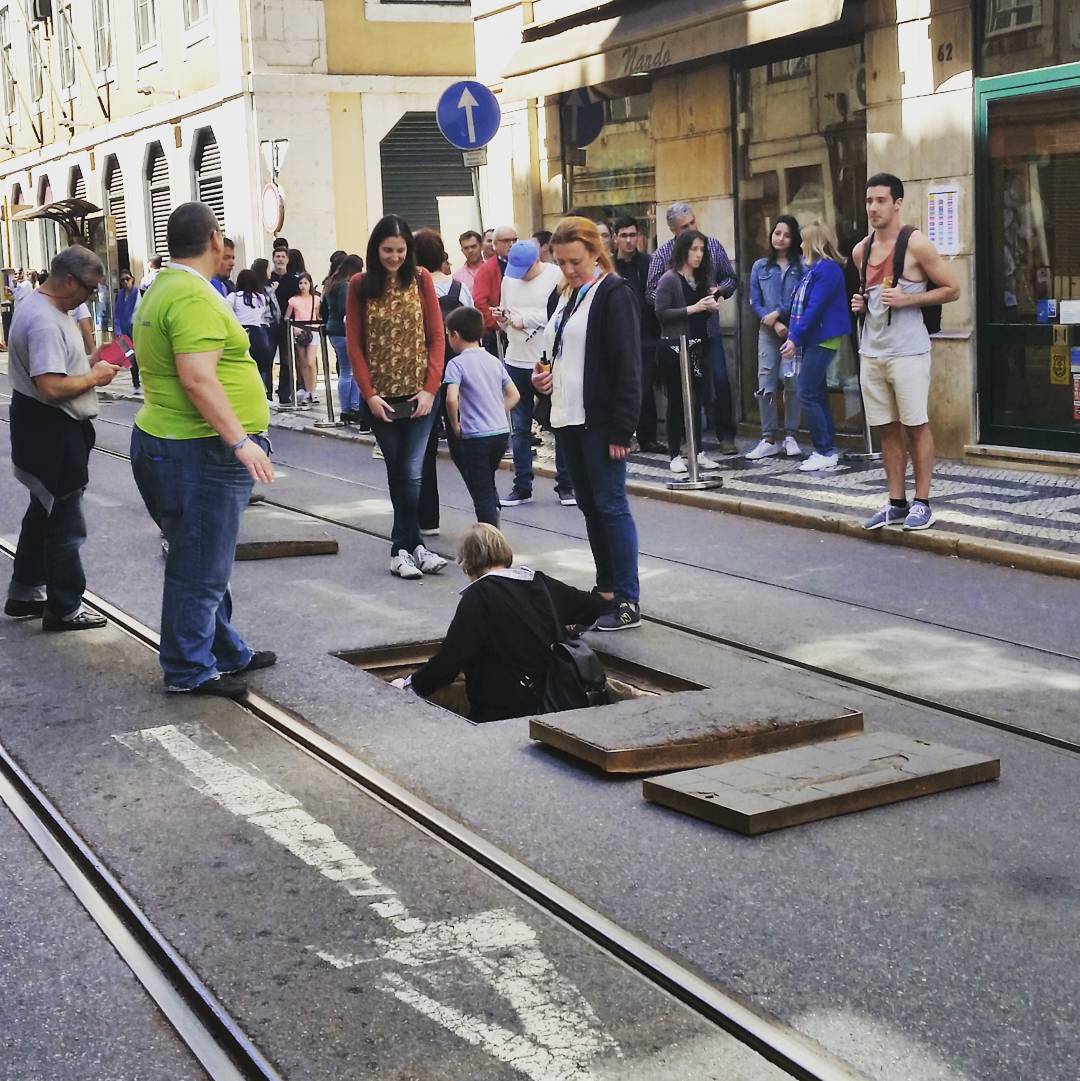“Lisbon is older than Rome” is a surprising claim we came across a few times during our stay. In fact it is 400 years older, settled by the Phoenicians around 1200 BC. The Roman Empire later founded their city of Olisipo on the site. Evidence from that era can still be seen in a few places.
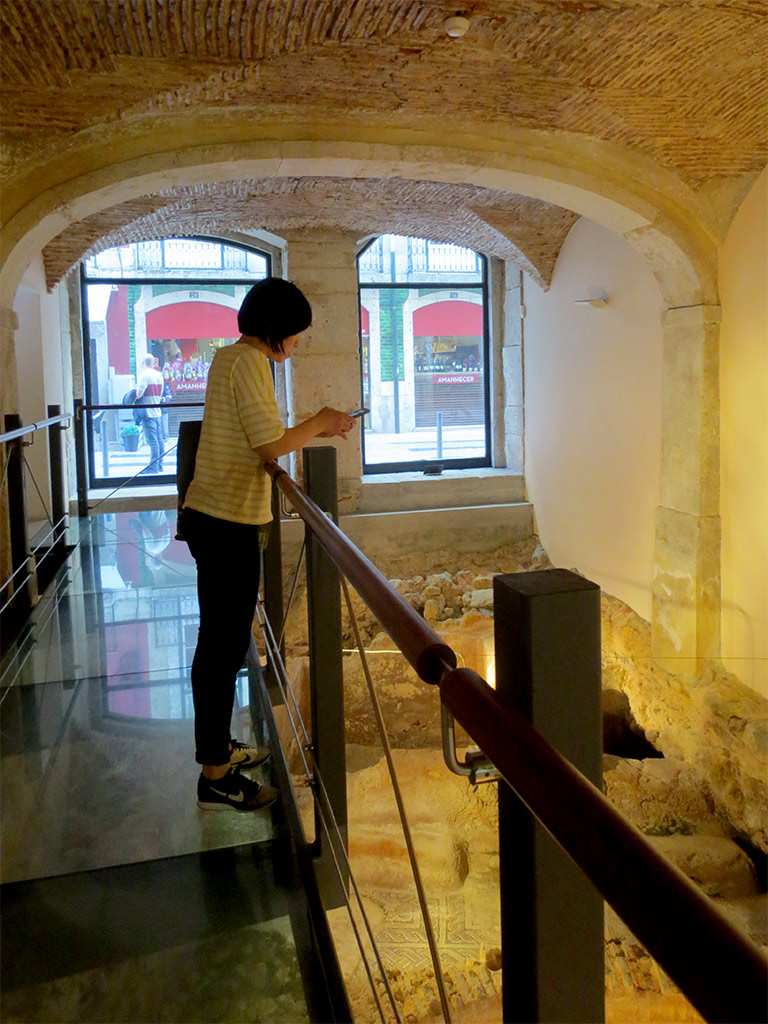
We visited two fascinating archeological sites: the Núcleo Arqueológico and the Museu do Teatro Romano.
Núcleo Arqueológico
In 1991 the Millenium BCP bank dug beneath their Baixa head office to add a parking garage. Instead, they unearthed archaeological finds that were so significant they decided to preserve them and make them publicly accessible.
Archaeologists now give free tours of the Núcleo Arqueológico, and we were guided around the low-ceilinged basement on raised walkways that provide good views of the excavations beneath.
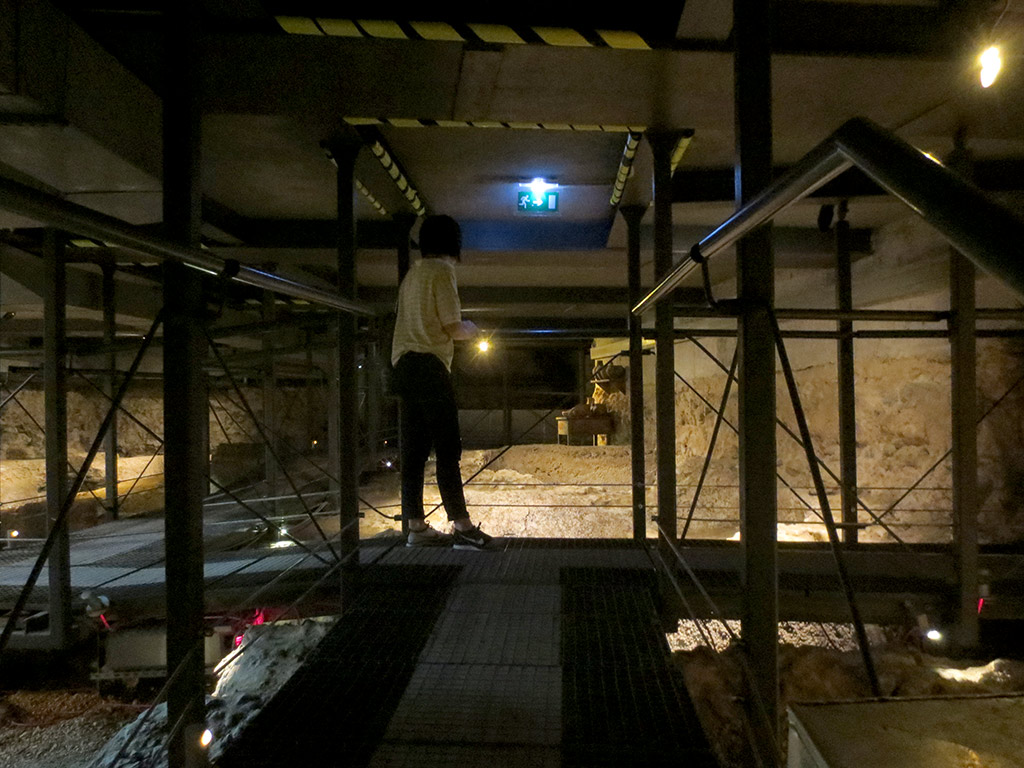
This is a house dating to the Paleolithic period. It would have been home to about 10 people; the round well to the left was built thousands of years later by the Romans. Each layer of history was oblivious to what they were building on top of.
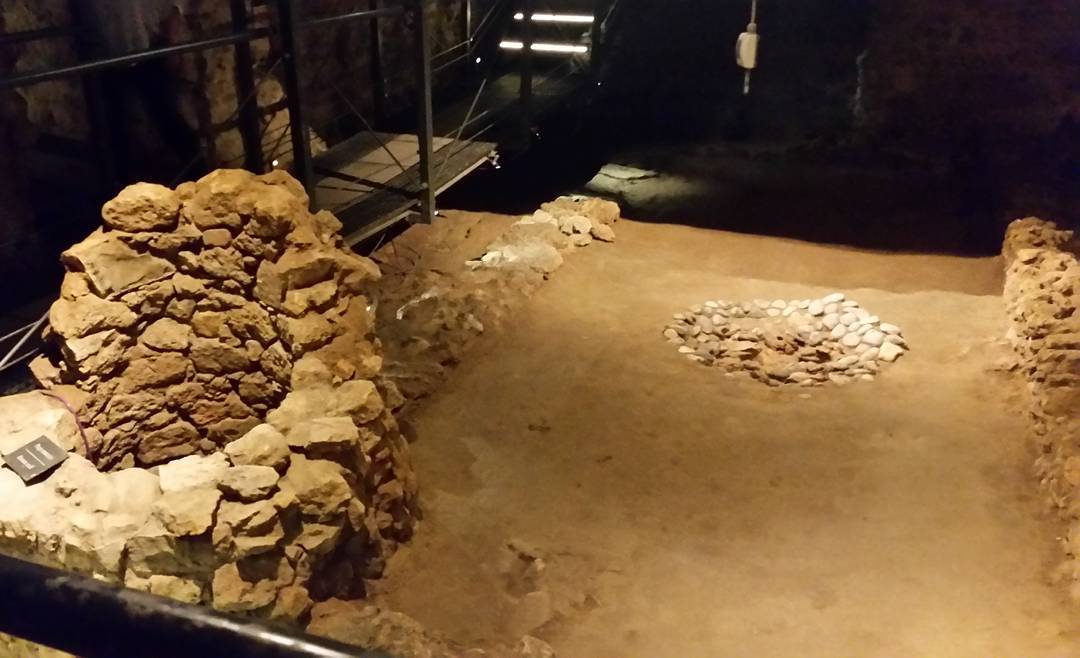
This is part of a Roman fish factory, where huge tanks were used to ferment garum, a fish-based sauce that the Romans ate with everything, much the way some people use ketchup today.
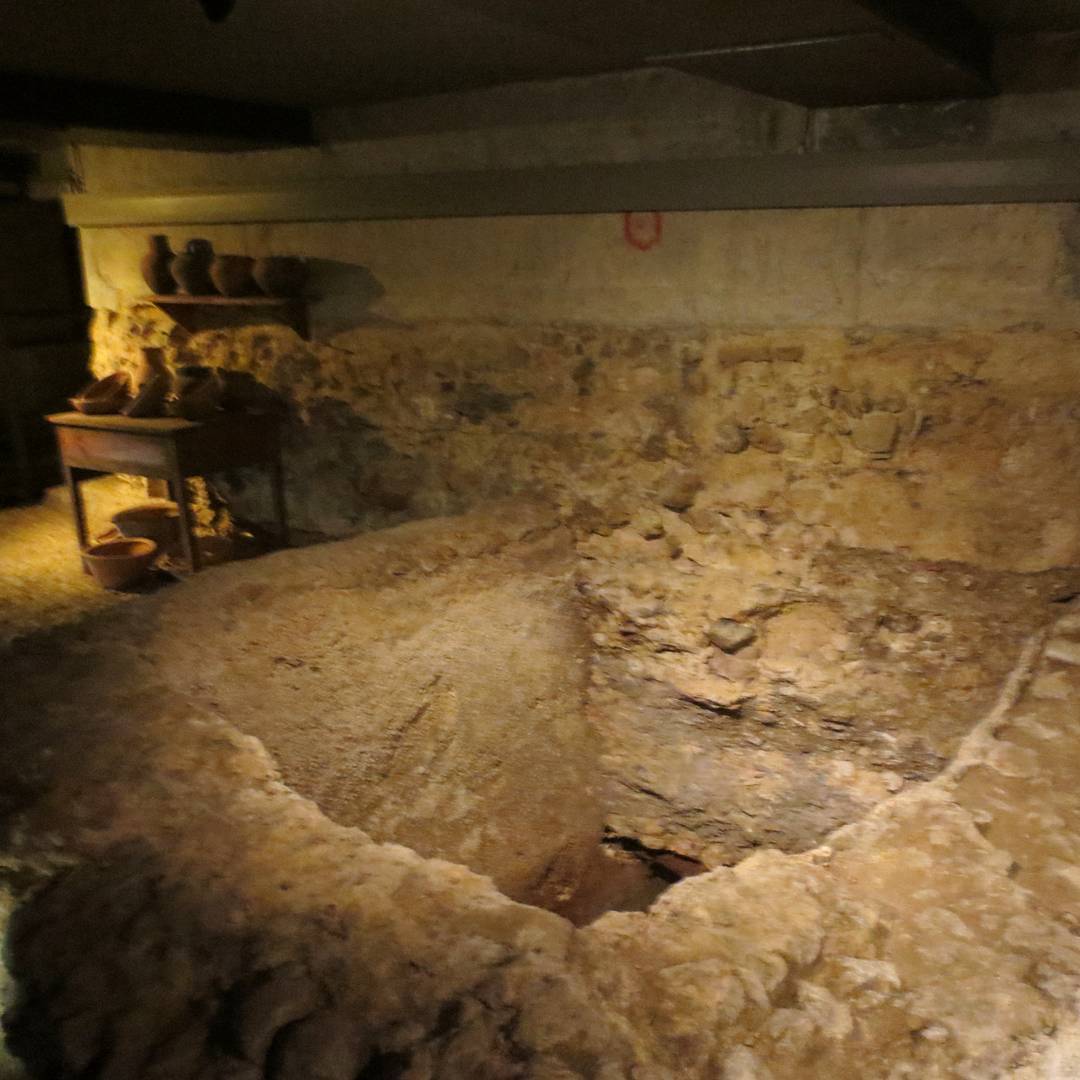
This is the mosaic floor from a Roman bath house, which had the usual hot area (“caldarium”) and cold area (“frigidarium”). The curve of bricks is the base of a bread oven built by the Moors hundreds of years later.
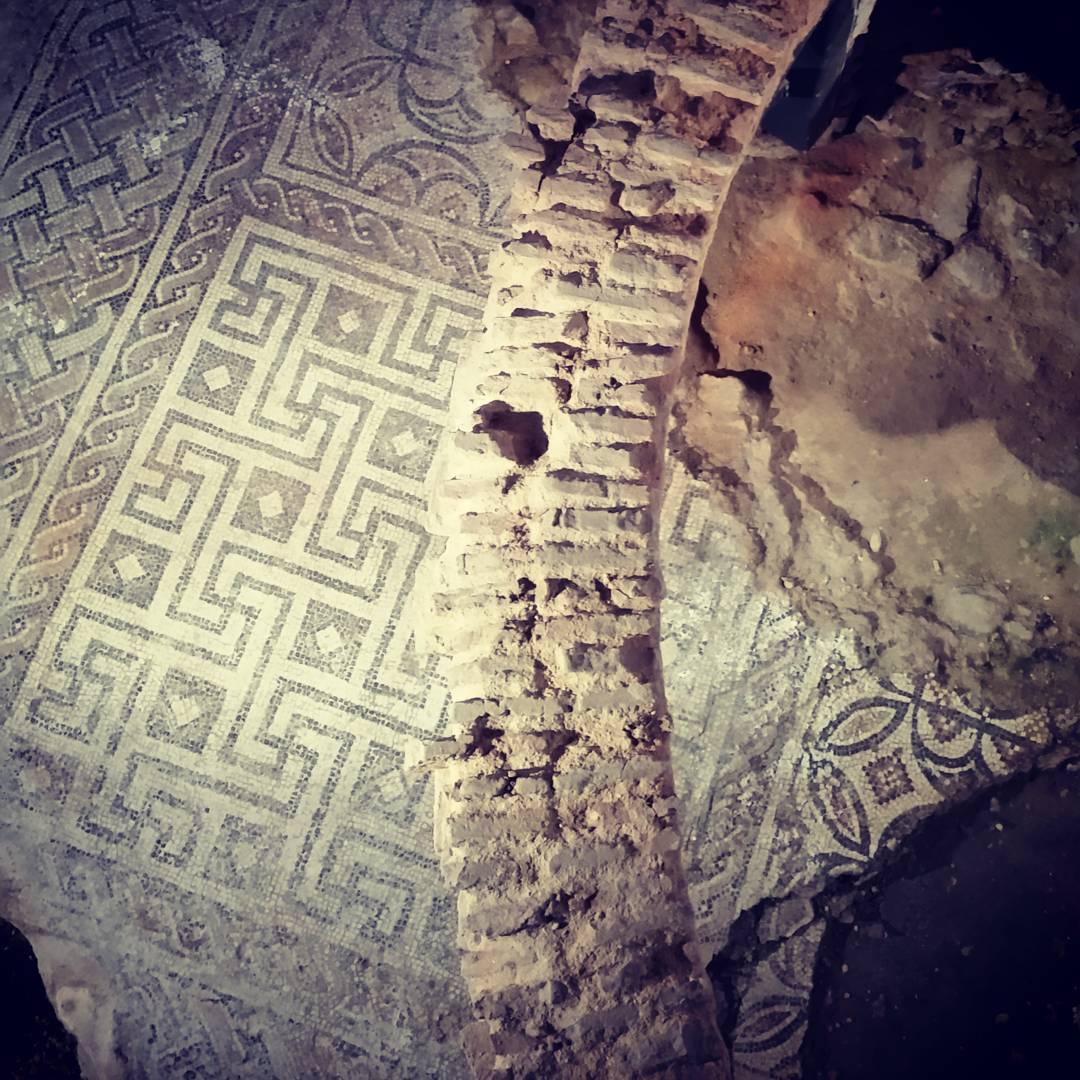
The BCP bank building above all this archaeology was constructed after the earthquake of 1755 destroyed Baixa. Hoping to prevent a repeat, replacement buildings were designed with wooden beam foundations that absorb shaking better than stone.
These wooden beams are still there, supporting the buildings above. One beam can be seen as the dark area in middle of this photo — some water must remain against the beams at all times or they will rot.
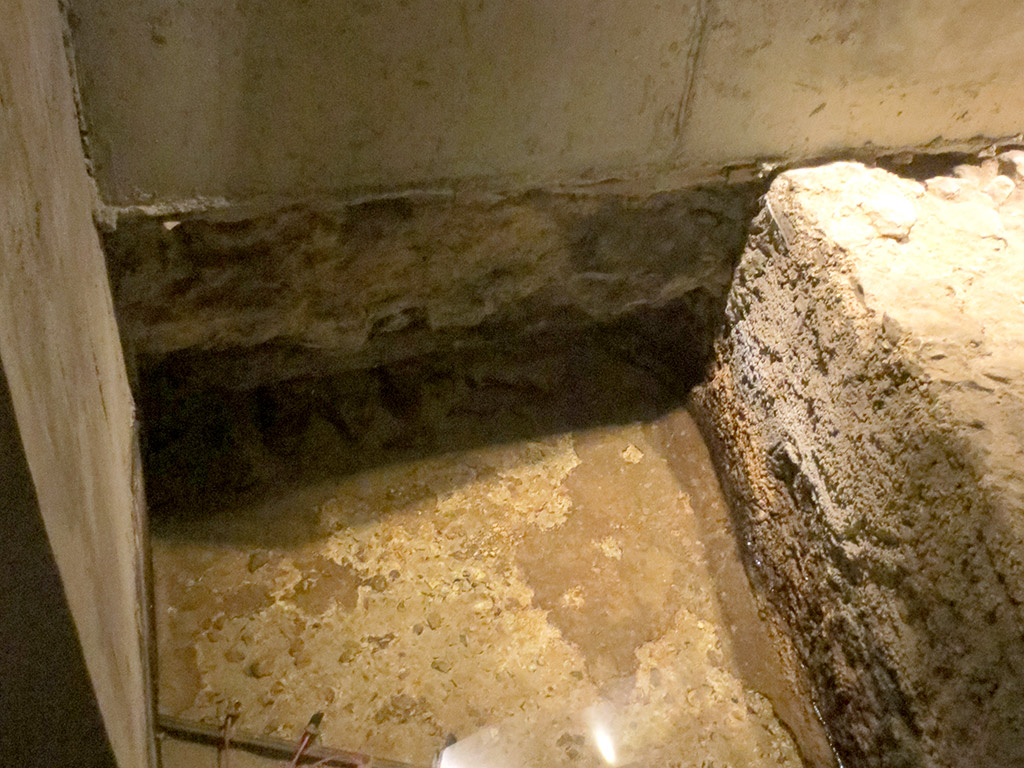
Museu do Teatro Romano
A short distance away in Alfama is another Roman archeological site. This one showcases the remnants of a Roman theatre and other finds across two museum buildings.
The theatre itself was constructed in the beginning of 1st century AD and remodeled in 57 AD.
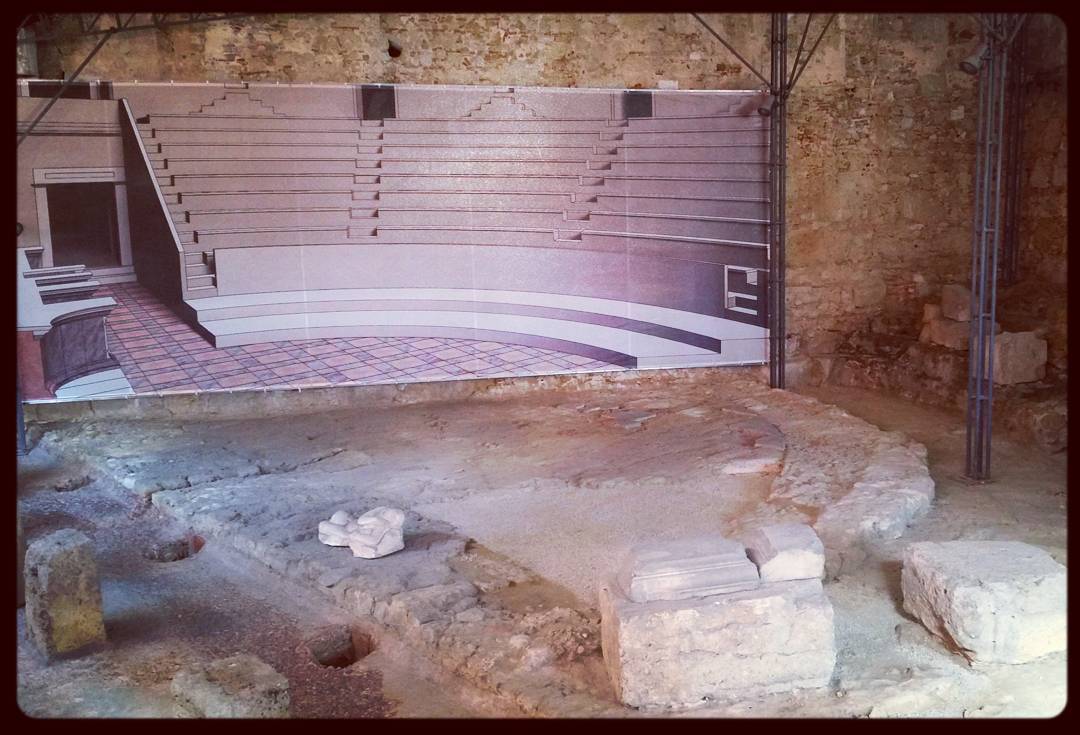
The museum buildings are very new, constructed on top of the Roman archaeology, which is now underground after centuries of city-building above.
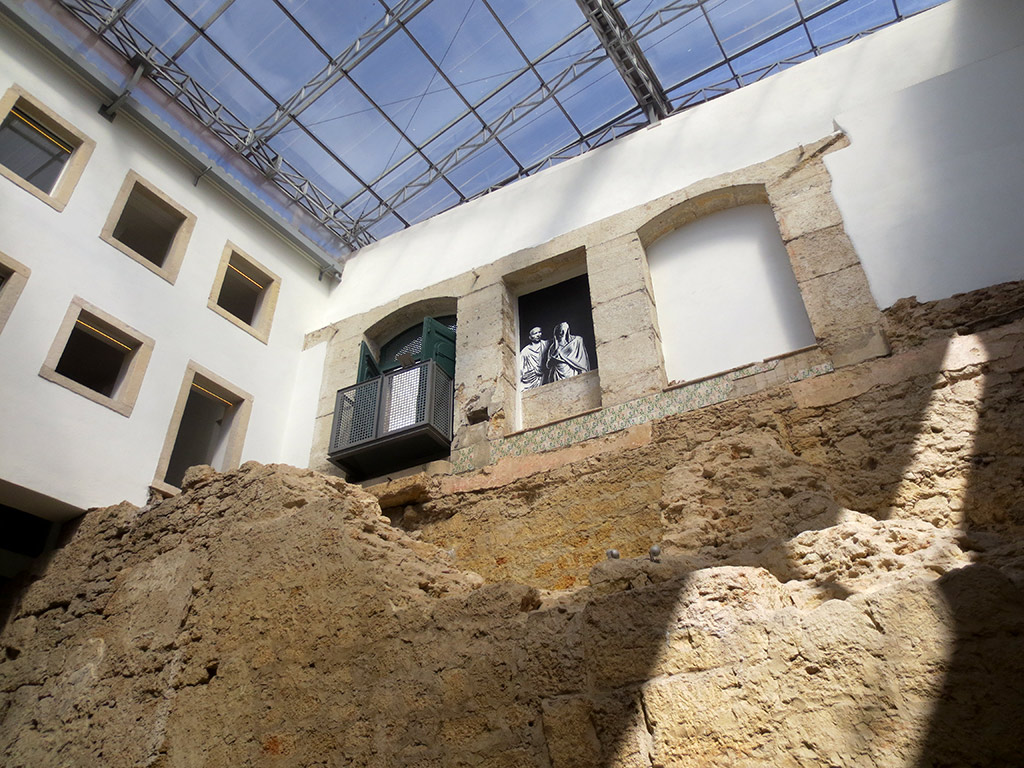
1600 years later Lisbon residents were still using the remains of the theatre as foundations for their homes. Here are 17th century steps and a floor integrated with Roman-era stones.
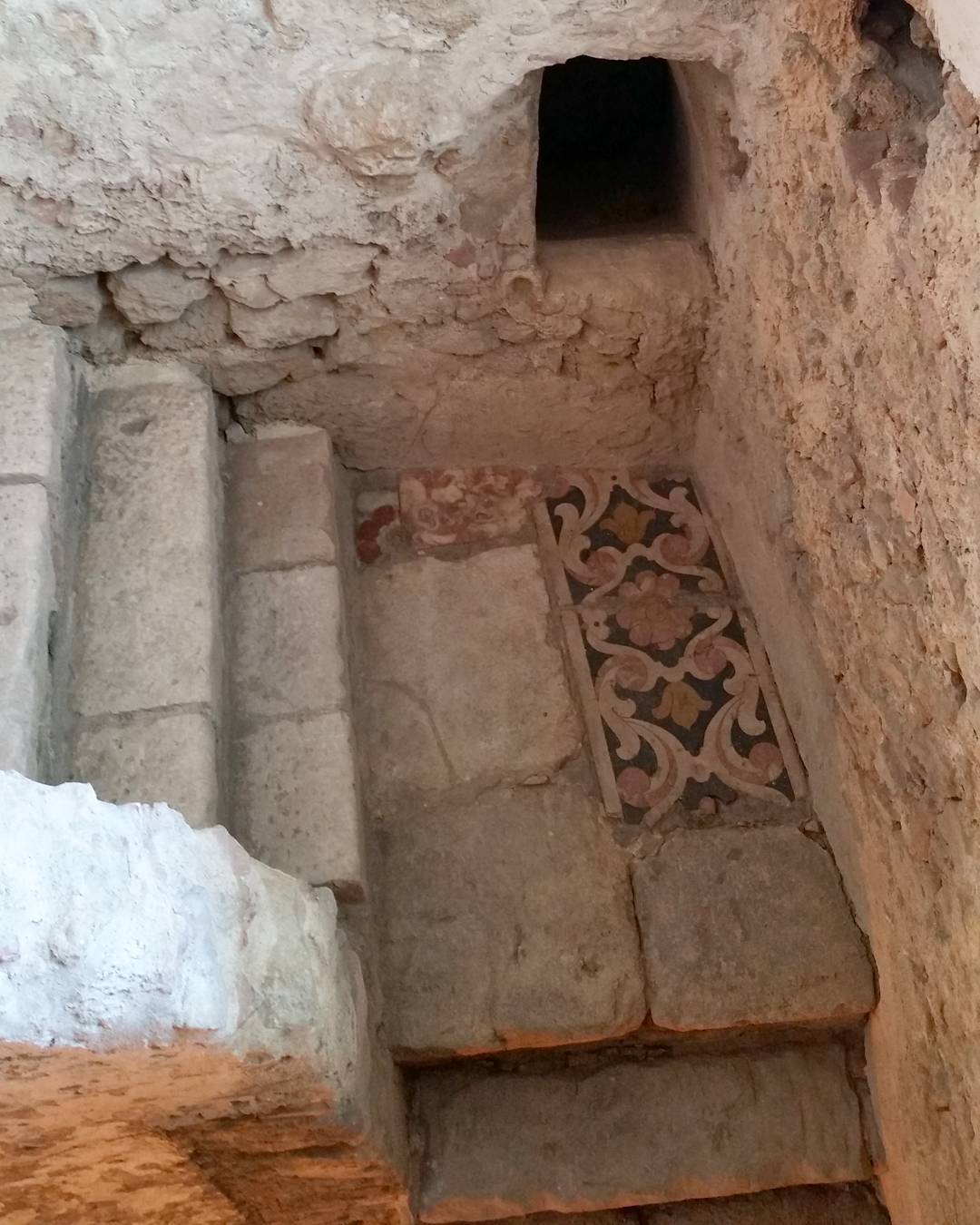
Many of these large storage vessels were excavated on the site.
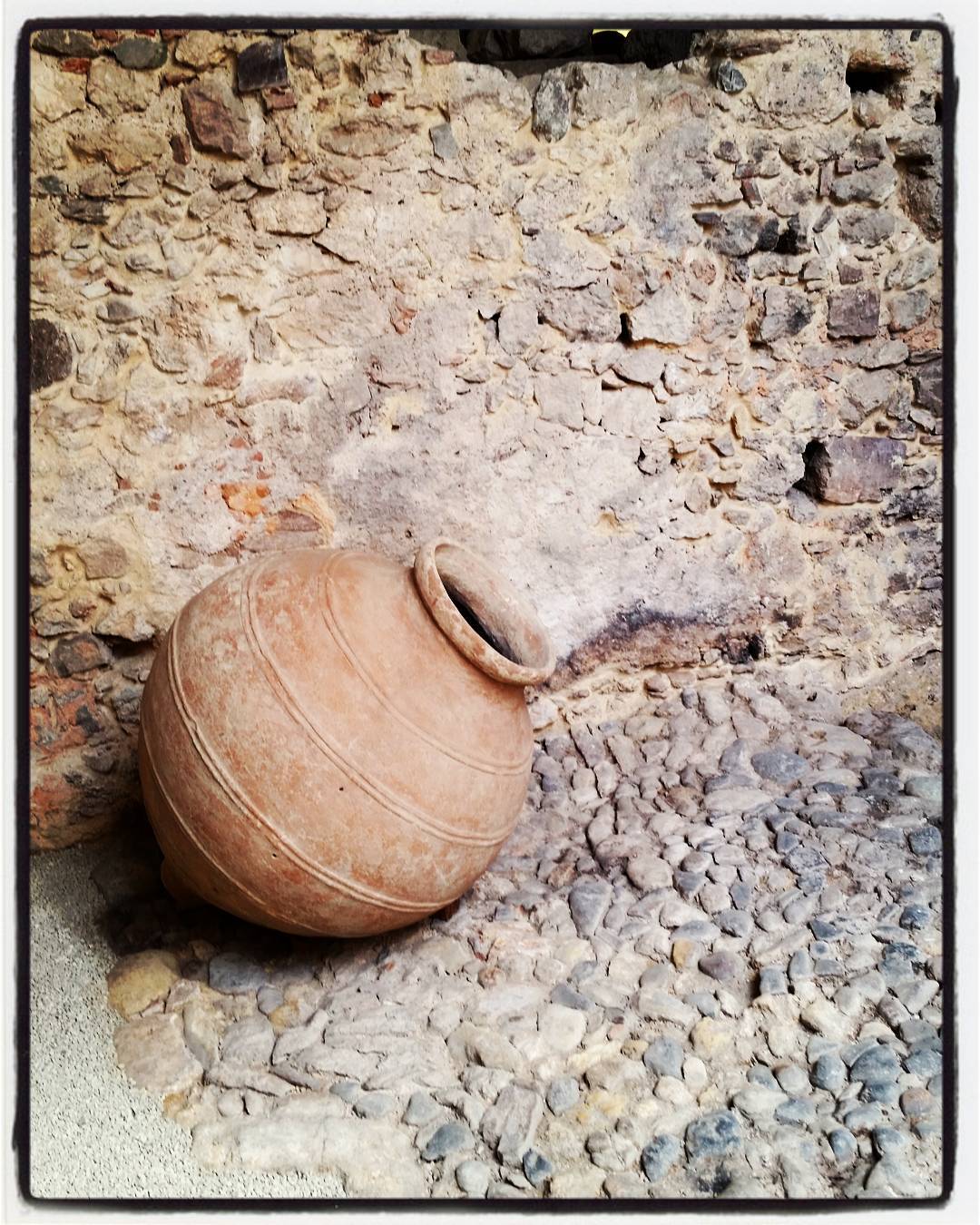
This Roman drainage system built with huge clay pipes was in use until the 15th century. The pipe is large enough for a person to climb into.
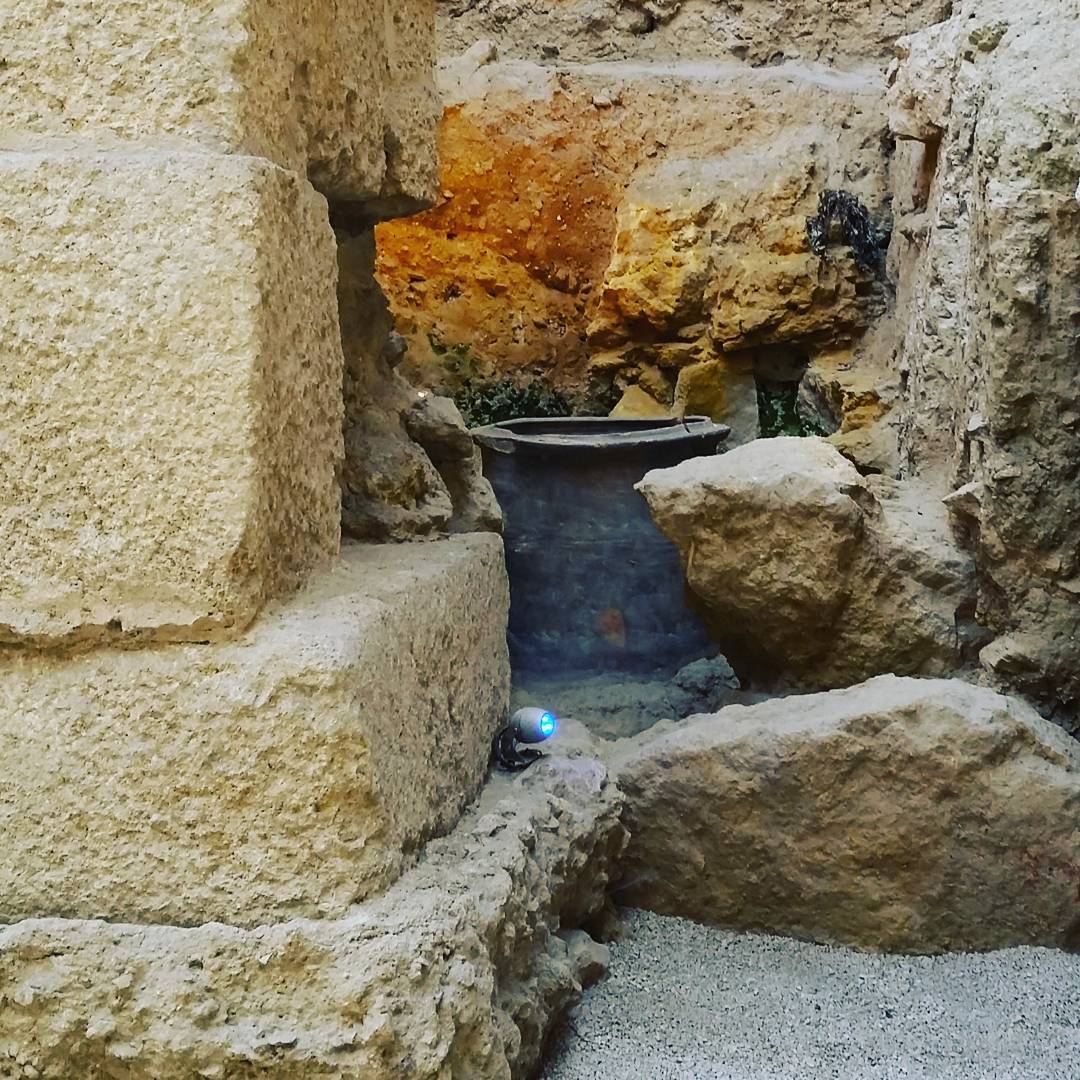
Inside the museum were additional artifacts including these giant columns that were originally part of the theatre.
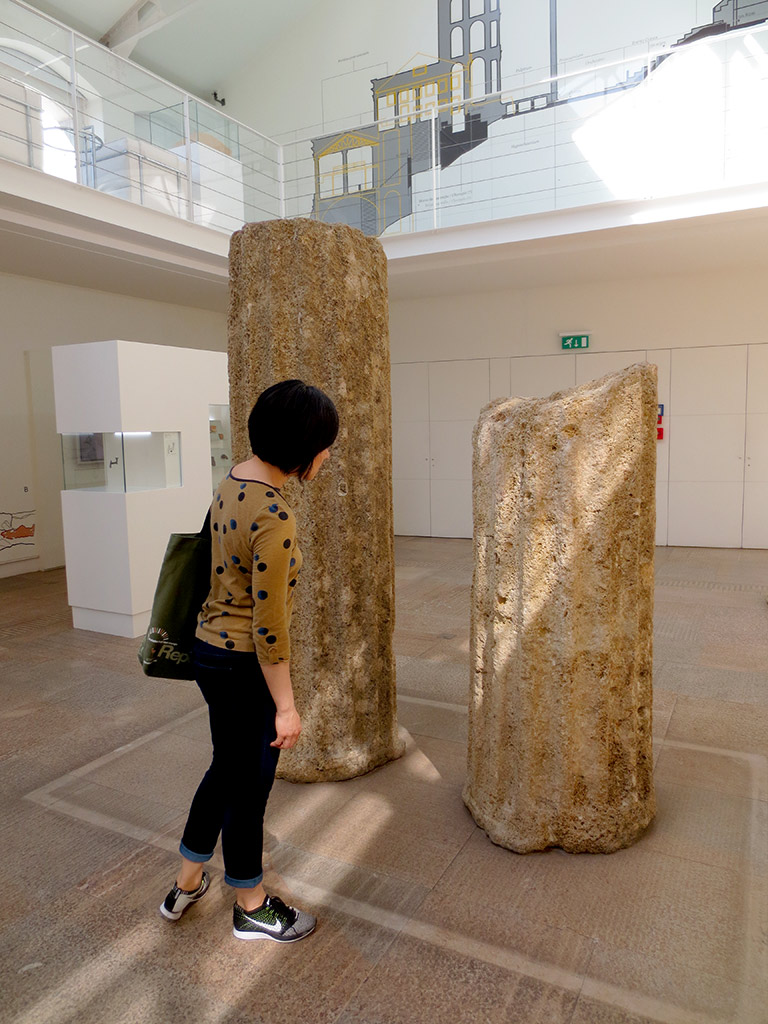
Underground Roman Galleries
One Roman site in Lisbon that we didn’t get to explore was the Underground Roman Galleries. These are only drained and open to the public a few times a year. We missed our opportunity by only a few hours.
We did, however, catch a glimpse of people climbing up out of the galleries onto Rua da Conceição. The street was kept closed for several blocks to allow the access.
